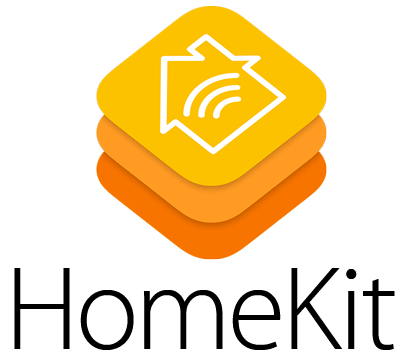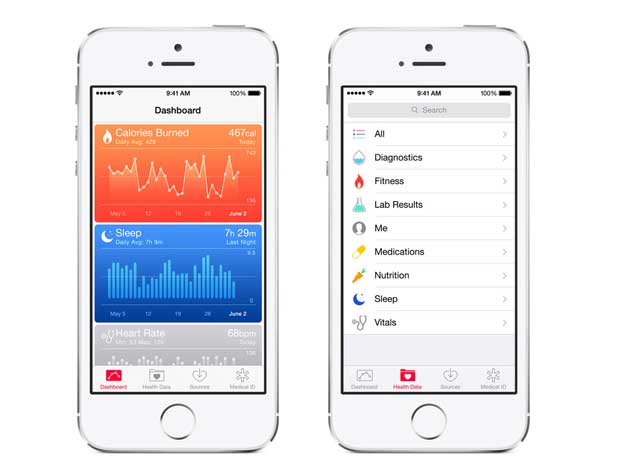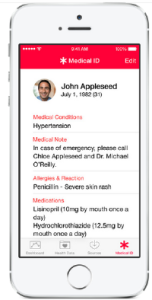Been too busy to comment until now on Apple’s HomeKit platform, announced last week at its WWDC event.
(PROMINENT DISCLAIMER! Having to send huge amounts of money to Loyola of Maryland for the next three years [I feel like I’m in the Weimar Republic and must carry tons of money to Baltimore in a wheelbarrow, LOL] to secure my youngest’s sheepskin has led to a part-time sales job at the Apple Store — which doesn’t give me any inside insights into their strategy. Rest assured that nothing that will ever appear in this blog about Apple will be gathered from anything other than public sources. I know only what you know, and the opinions expressed here are solely my own).
As the announcement aimed at developers said,
“HomeKit is a new framework for communicating with and controlling connected devices in a user’s home. Apps can enable users to discover devices in their home and configure them, or you can create actions to control those devices. Users can group actions together and trigger them using Siri.”
 As I wrote when Google bought Nest last winter, the most immediate impact will probably be to boost public visibility and understanding of the IoT and smart homes.
As I wrote when Google bought Nest last winter, the most immediate impact will probably be to boost public visibility and understanding of the IoT and smart homes.
Beyond that, the ability to leverage Siri’s growing versatility will probably be a major factor in promoting IoT ease-of-use (given my pre-occupation with use of smart-home technology to encourage “aging in place” among seniors, it will be very important in getting the tech-averse and those who have trouble typing on a smart phone to use HomeKit-compliant devices. And then there’s the companion Health Kit, also announced at WWDC, which I’ll review in my next post.).
As you might expect given Apple’s overall zeal for close hardware and software integration, the developer’s kit emphasizes protocols and standards compliance — which should in turn enhance overall security and privacy protections, benefiting all players:
“Home Kit provides seamless integration between accessories that support Apple’s Home Automation Protocol and iOS devices, allowing for new advances in home automation. By promoting a common protocol for home automation devices and making a public API available for configuring and communicating with those devices, Home Kit makes possible a marketplace where the app a user controls their home with doesn’t have to be created by the vendor who made their home automation accessories, and where home automation accessories from multiple vendors can all be integrated into a single coherent whole without those vendors having to coordinate directly with each other.
Home Kit allows third-party apps to perform three major functions:
- Discover accessories and add them to a persistent, cross-device home configuration database.
- Display, edit, and act upon the data in the home configuration database.
- Communicate with configured accessories and services to get them to perform actions, such as turning on the lights in the living room.
The home configuration database is not only available to third-party apps, it’s also available to Siri. This allows users to give commands like, ‘Siri, turn on the lights in the living room.’ If a user creates a home configuration with logical groupings of accessories, services, and commands, Siri can make it very easy to accomplish sophisticated operations with voice control.”
Most important, individual IoT apps and devices can come together into “scenes,” in which a variety of actions (such as starting appliances, turning up the heat, etc., when you wake). IMHO, this emphasis on inter-operability is critically important to public acceptance of the IoT. As I’ve written before about my IoT “Essential Truths,” two critical things we need to do is to ask “who else could use this data?,” and to democratize innovation. As I understand the above description, it will be like the iPhone ecosystem, where Apple will review all apps and decide whether they can be sold on whatever “store” the company creates for the IoT, but developers will be encouraged to run wild with their imaginations to create both new hardware and to come up with innovative mashups of data from all the various devices that will help integrate them into a comprehensive ecosystem in which, for example, an action by one device may trigger a follow-on action by another device.
The framework, logically, uses a home metaphor to organize all the components into a hierarchy:
- “Homes (
HMHome) are the top level container, and represent a structure that a user would generally consider to be a single home. Users might have multiple homes that are far apart, such as a primary home and a vacation home. Or they might have two homes that are close together, but that they consider different homes—for example, a main home and a guest cottage on the same property.
- Rooms (
HMRoom) are optional parts of homes, and represent individual rooms in the home. Rooms don’t have any physical characteristics—size, location, etc. They’re simply names that are meaningful to the user, such as ‘living room’ or ‘kitchen’. Meaningful room names enable commands like, ‘Siri, turn on the kitchen lights.’
- Accessories (
HMAccessory) are installed into homes and assigned to rooms. These are the actual physical home automation devices, such as a garage door opener. If the user doesn’t configure any rooms, Home Kit assigns accessories to a special default room for the home.
- Services (
HMService) are the actual services provided by an accessory. Accessories have both user-controllable services, like a light, and services that are for their own use, like a firmware update service. Home Kit is most concerned with user-controllable services.A single accessory may have more than one user-controllable service. For example, most garage door openers have a service for opening and closing the door, and another service for the light on the garage door opener.
- Zones (
HMZone) are optional groupings of rooms in a home. ‘Upstairs’ and ‘downstairs’ would be represented by zones. Zones are completely optional—rooms don’t need to be in a zone. By adding rooms to a zone, the user is able to give commands to Siri such as, ‘Siri, turn on all of the lights downstairs.'”
As Fast Company observed, the HomeKit’s greatest contribution to the smart home may be streamlining interaction between various apps and devices through Siri:
“By opening up Siri to control third-party peripherals, the smart home experience will become infinitely more seamless. Up until now, controlling a smart device has meant unlocking a mobile device, launching an app, and then making adjustments–a bit too much friction for lowering the volume of the TV or dimming the lights.”
Apple has already lined up a great assortment of partners: iDevices, iHome, Cree, Honeywell, Haier, Philips, Kwikset, Netatmo, and Withings. Hmm: no Nest?
Still to come, of course, is to find out what Apple itself will develop in terms of smart home hardware, such as the long-rumored iWatch (again, I know nothing about this beyond what we’ve all read in blogs, etc.).
No matter what shape the company’s IoT strategy takes, the fact that the world’s second-most profitable company, and leading retailer, has made such a public commitment to the IoT and smart homes should dramatically speed public adoption, and, perhaps equally important, create public awareness. After all, remember how quickly and dramatically the iPhone transformed the cell phone paradigm — and our lives.
NEXT: Apple’s Health Kit.



